Personal Case Study - Undergraduate Thesis
Role: Designer + Research
How can universities and colleges help rising mental health issues on campus?
Life is stressful, even as a college student. With an uncertain future ahead, new responsibilities in the now, and the reality of work-life-debt, it can be difficult to remain calm and rational.
This was made in a moment where in my life where I was very stressed out and I had noticed others were too. It’s a very common issue, with everyone having varying degrees of physical and mental strain. My thesis was focused on how to ease this rising issue and help people find treatments for themselves. After doing wide spread research on the topic, I concluded that providing a complete treatment for someone overwhelmed with stress is highly subjective and based on the individual.
So what can be done?
Some students literally drown in stress
Design Process
From stress balls to head massage machines, there were already a lot of gadgets that people could buy to ease their stress. But it appeared that most people I had interviewed simply would go on a walk as a mental break. I decided to make a physical space within the campus itself that would be within student’s walk path.
Initially I dived into market research, seeing what meditative space worked commercially and what was being used in the medical field. Around 2017-2019, there was a brief boom of startups creating private booths for open-layout offices. People missed having some privacy.
Based on that research, I started creating concepts of possible pop-up booths. Departments and rooms at my college were frequently changing and moving around. This meant that whatever space I created could not be permanent and had to be adjustable to the existing space. This was fine, as I had discovered different departments had different peaking points of stress depending on the time in the semester.
Several large low-fidelity prototypes were quickly made to figure out spacing and required features. Textures, smells, and background sounds were also experimented with as possible additional sensory de-stressors.
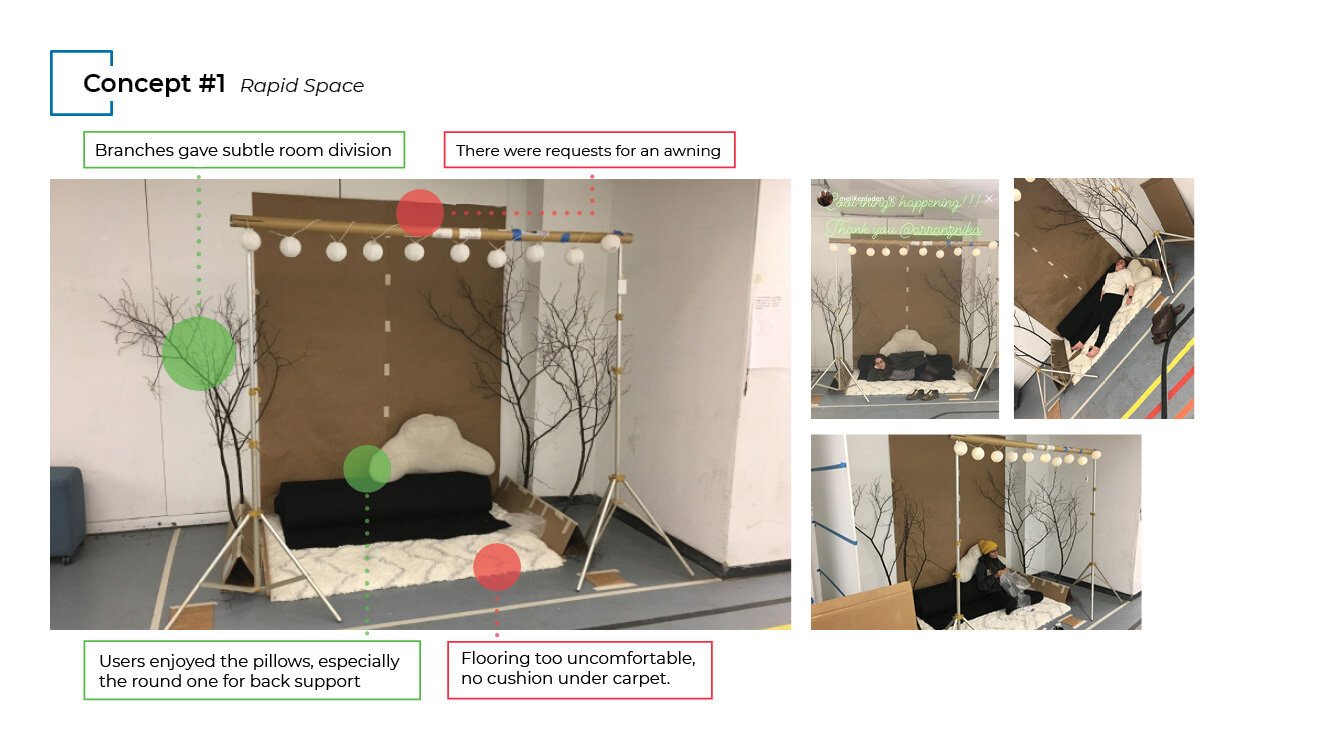
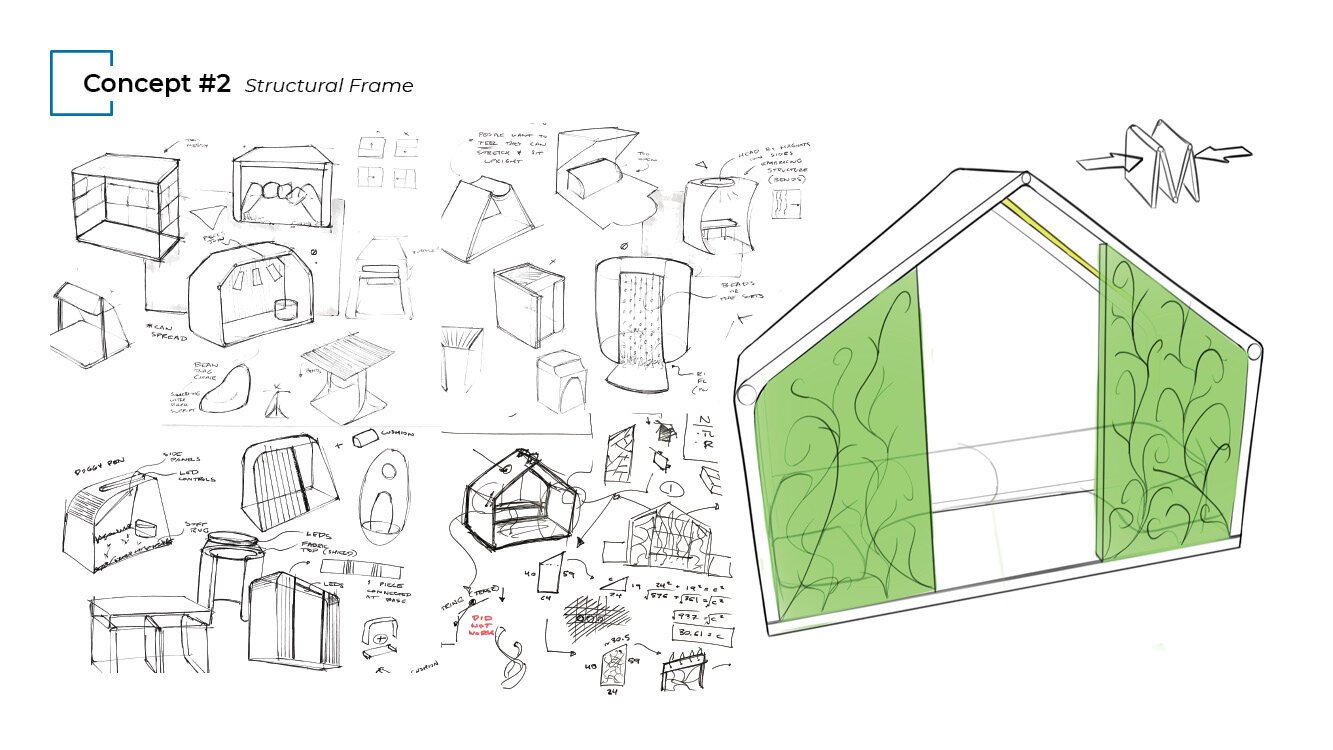
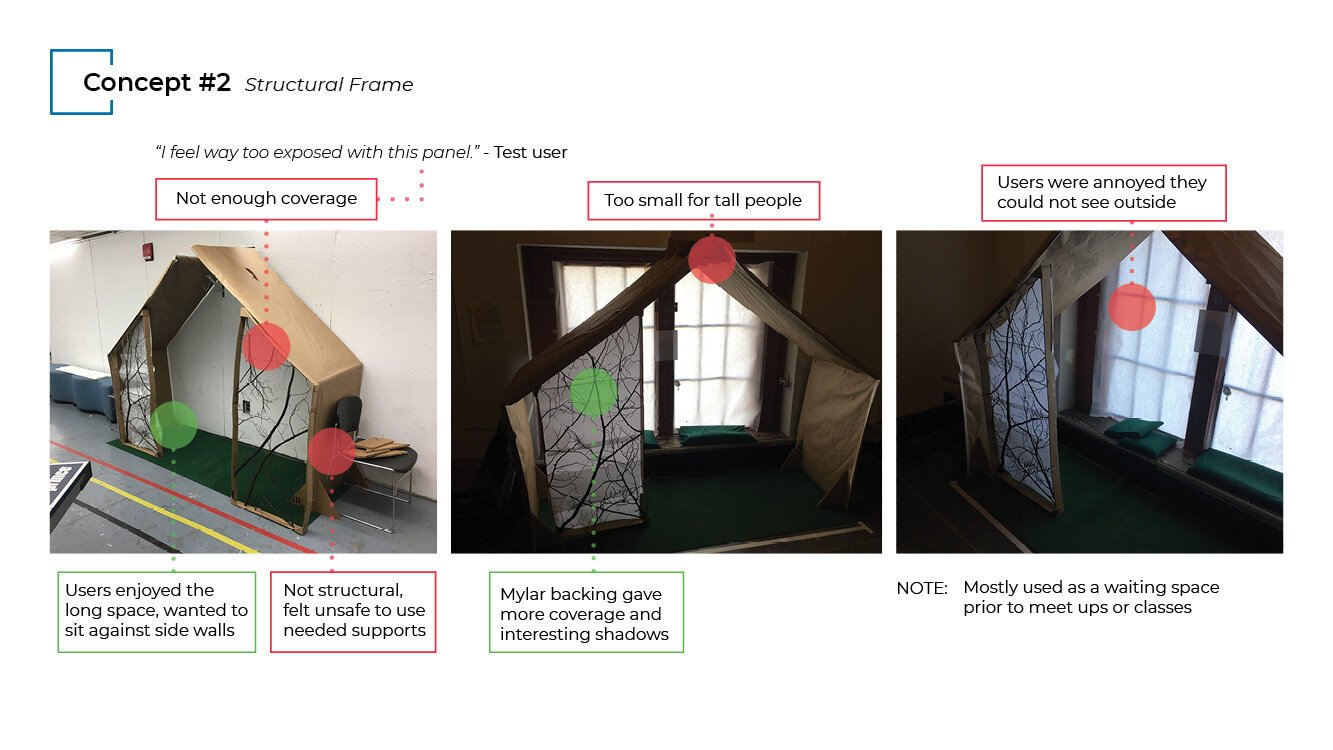
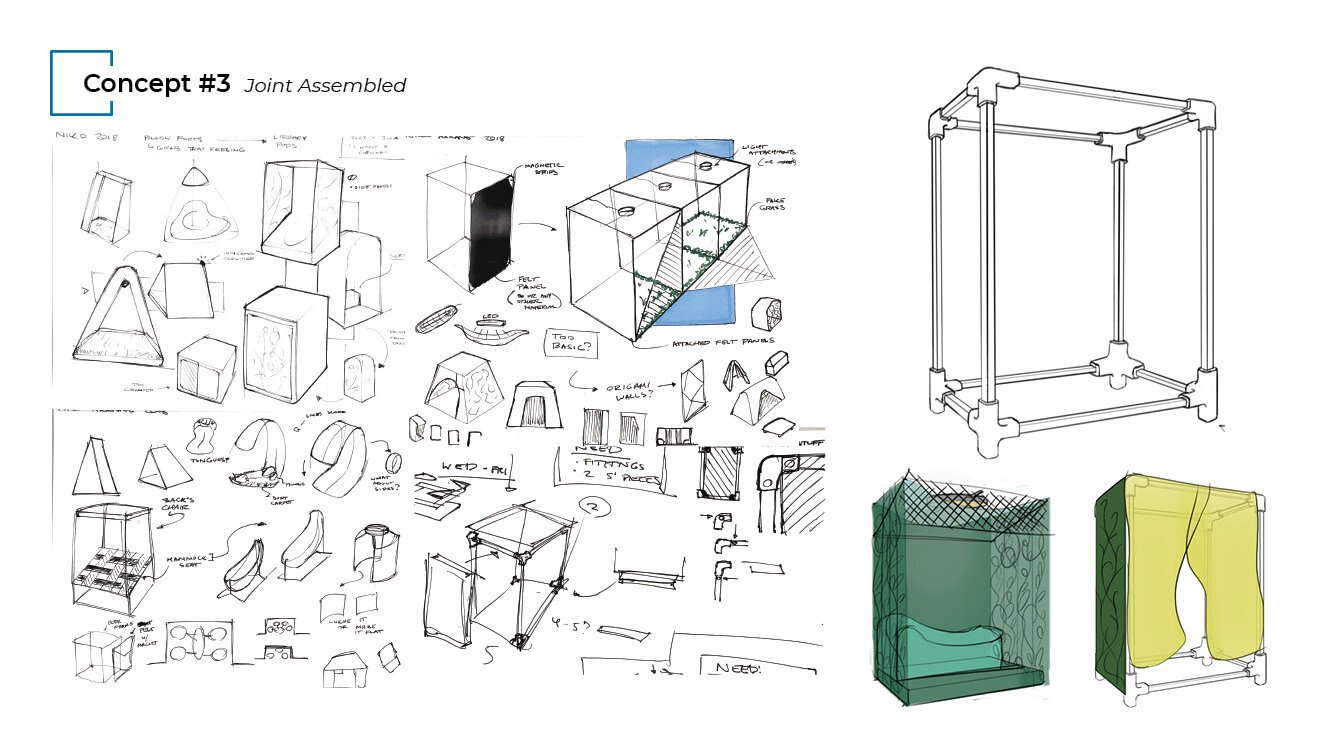
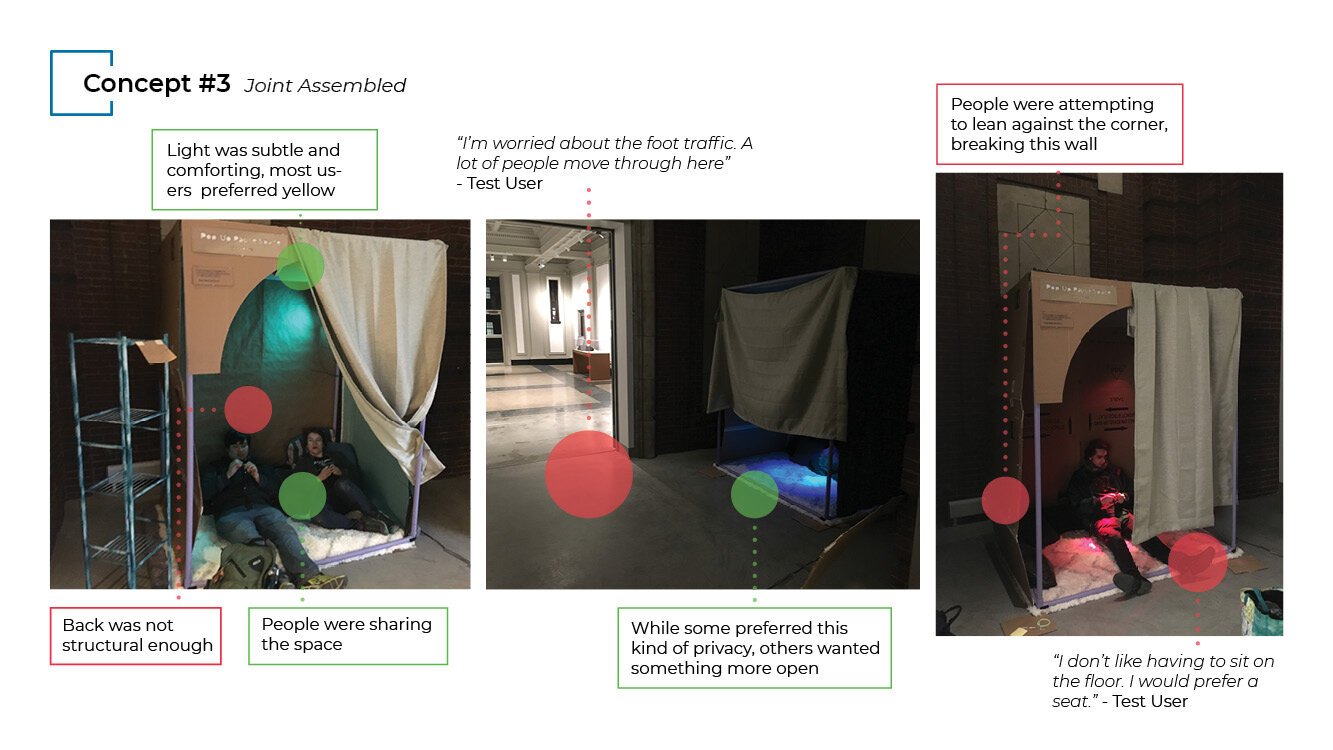
A number of smaller prototypes were built exploring the final form and features of the space. The nostalgic canopy of weeping willows were a large inspiration for the finalized form, thus flowing curtains and ceiling fabrics were considered. Leaf patterns were also explored as a possible way to play with light in the booth, making it feel more organic and separate from the outside chaos.

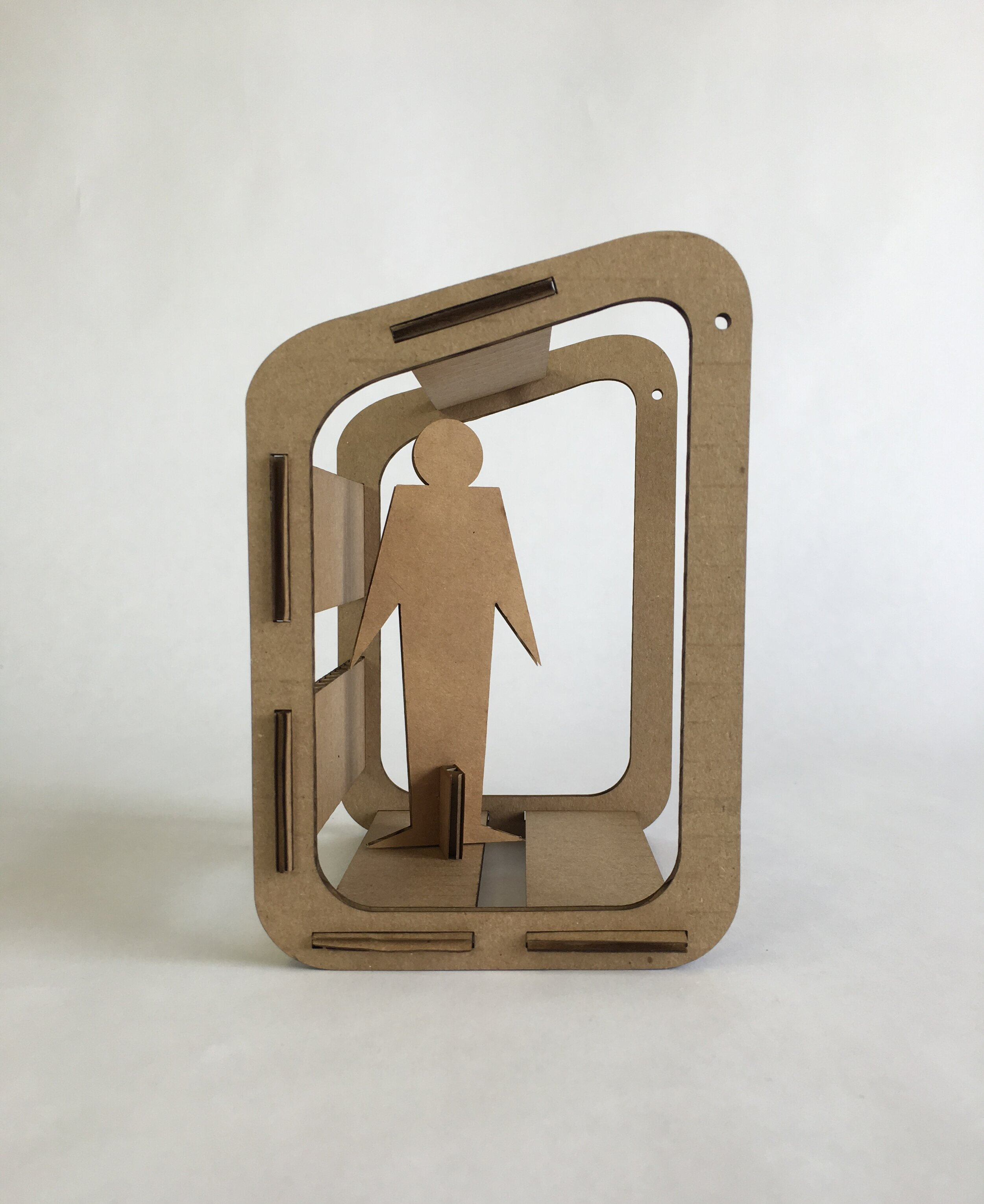


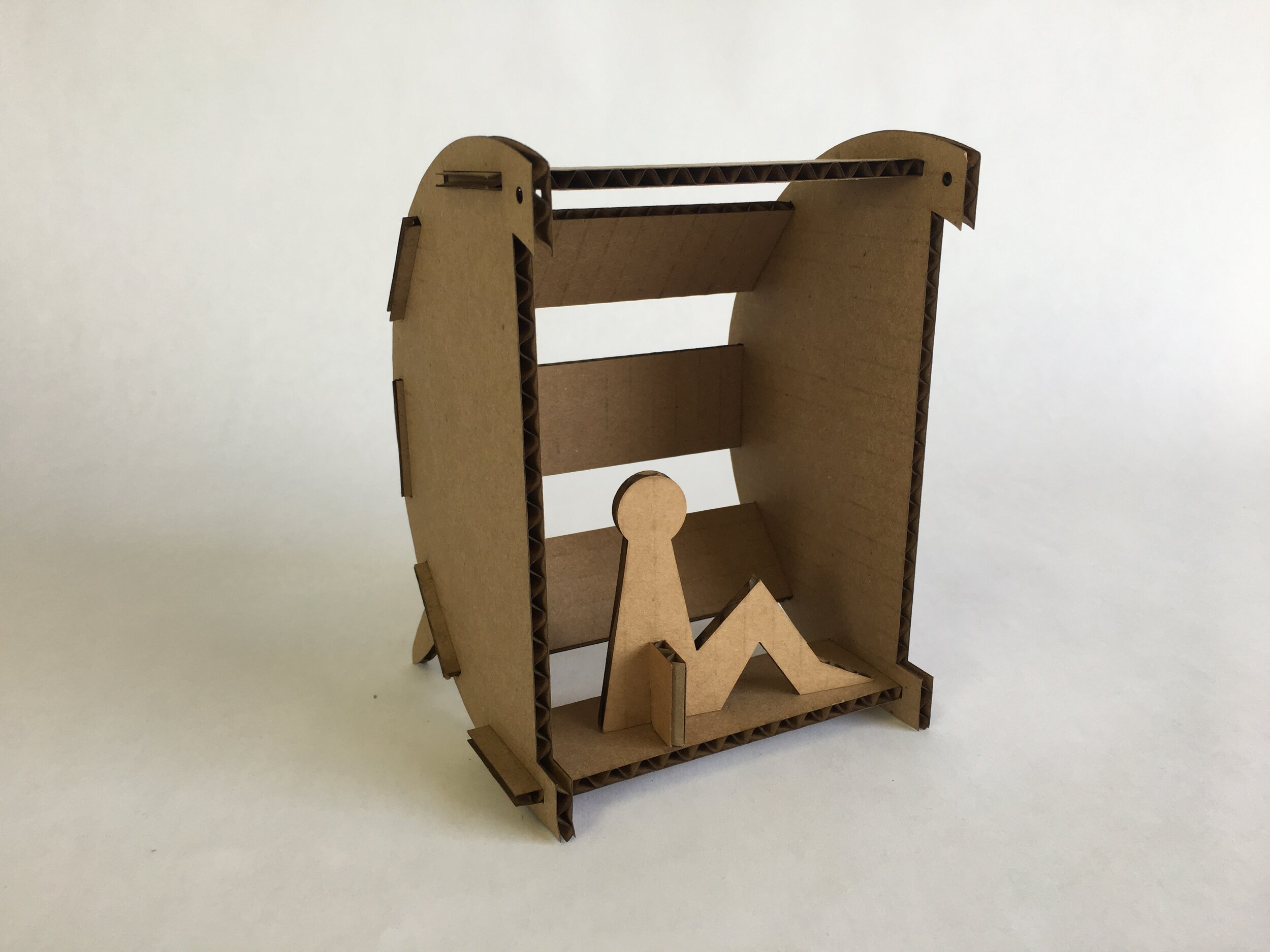
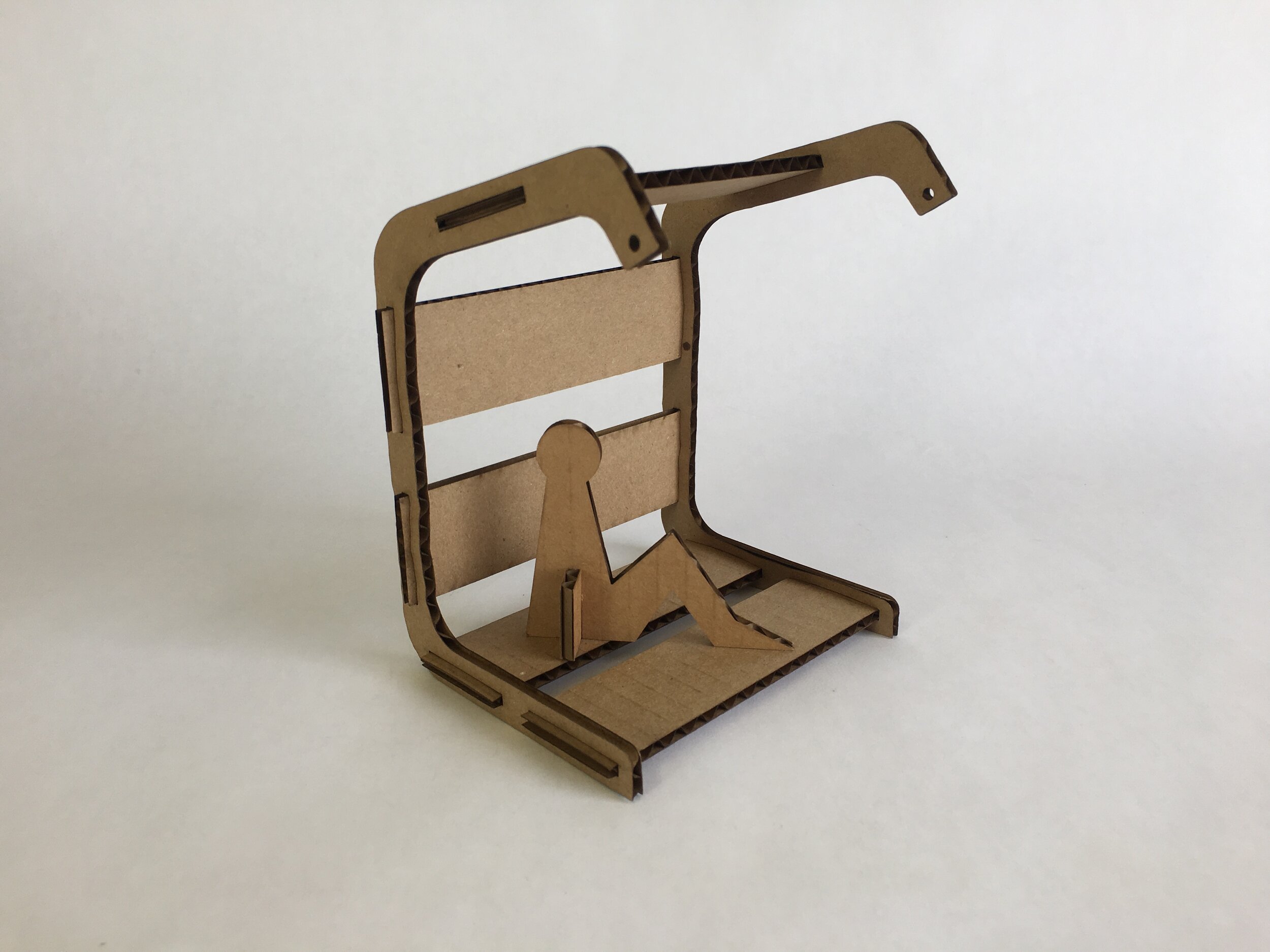

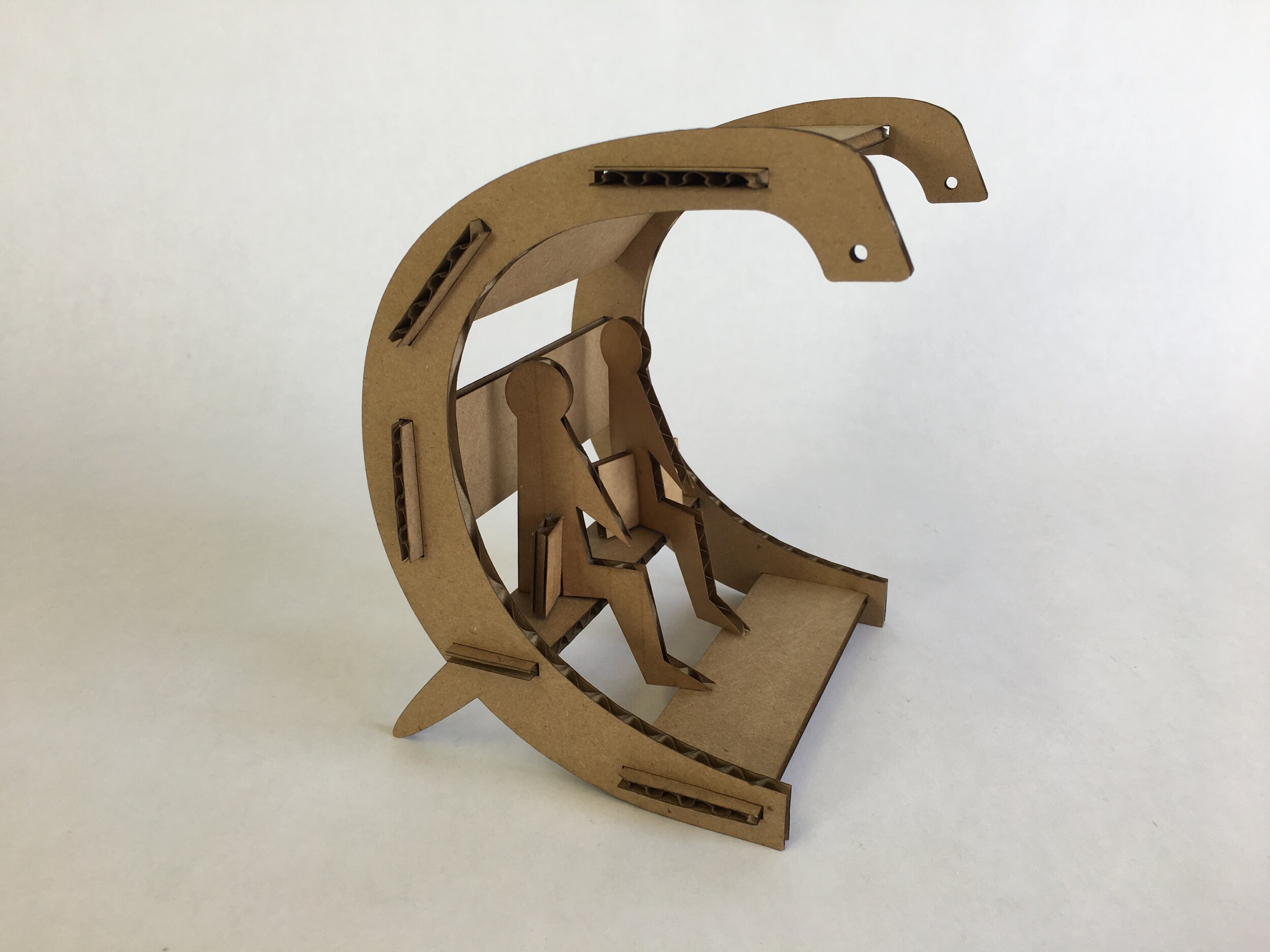
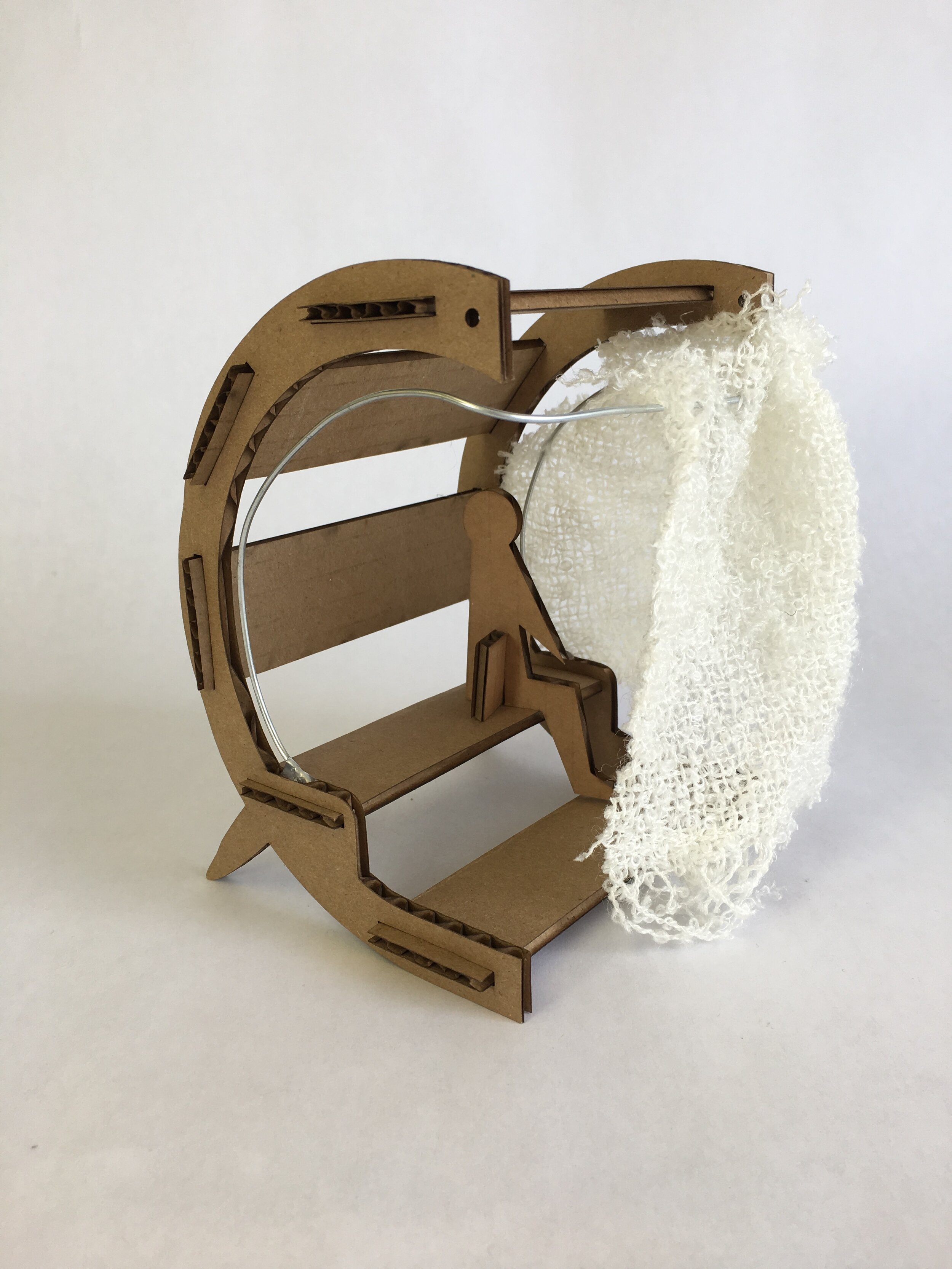
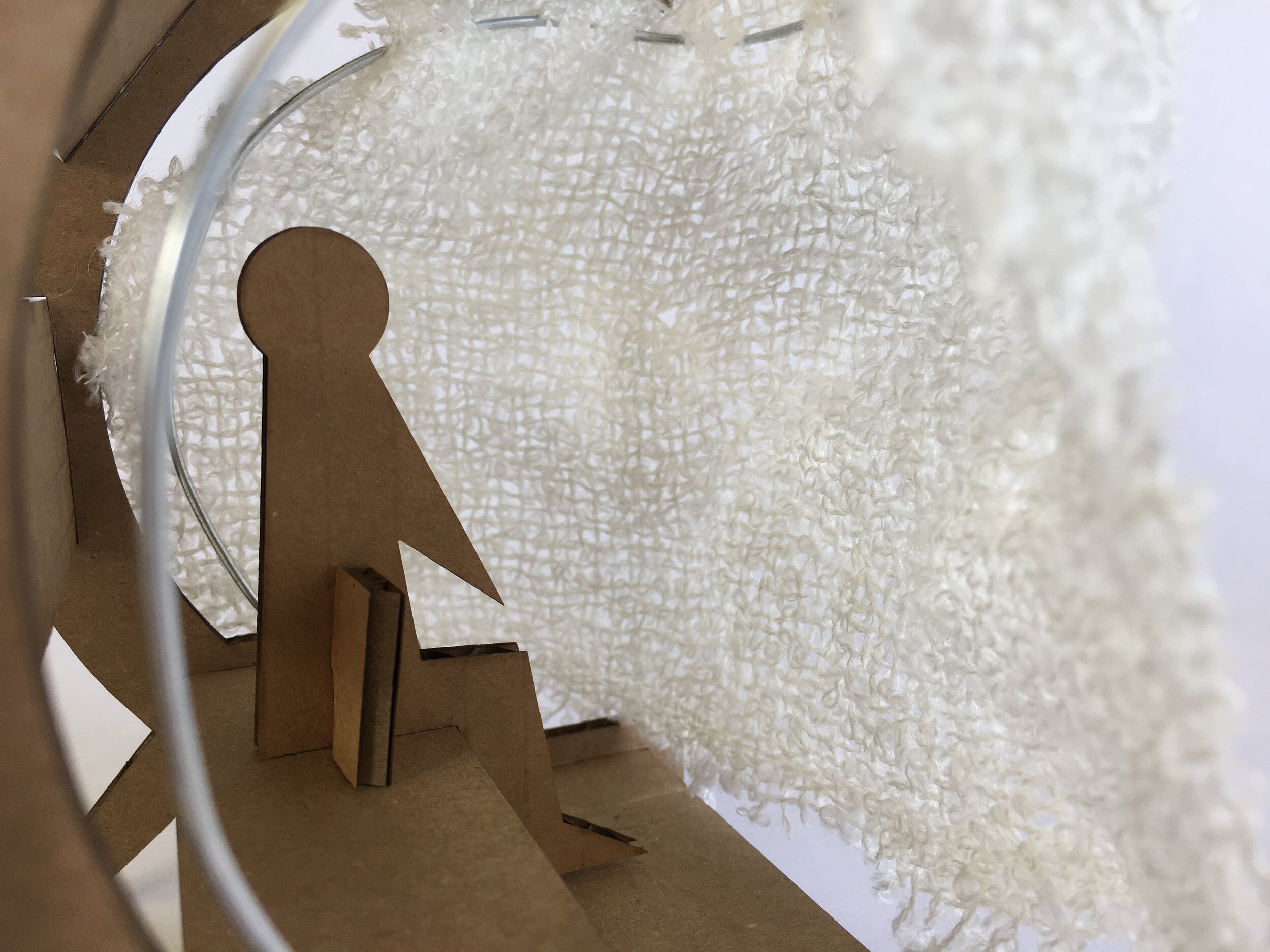
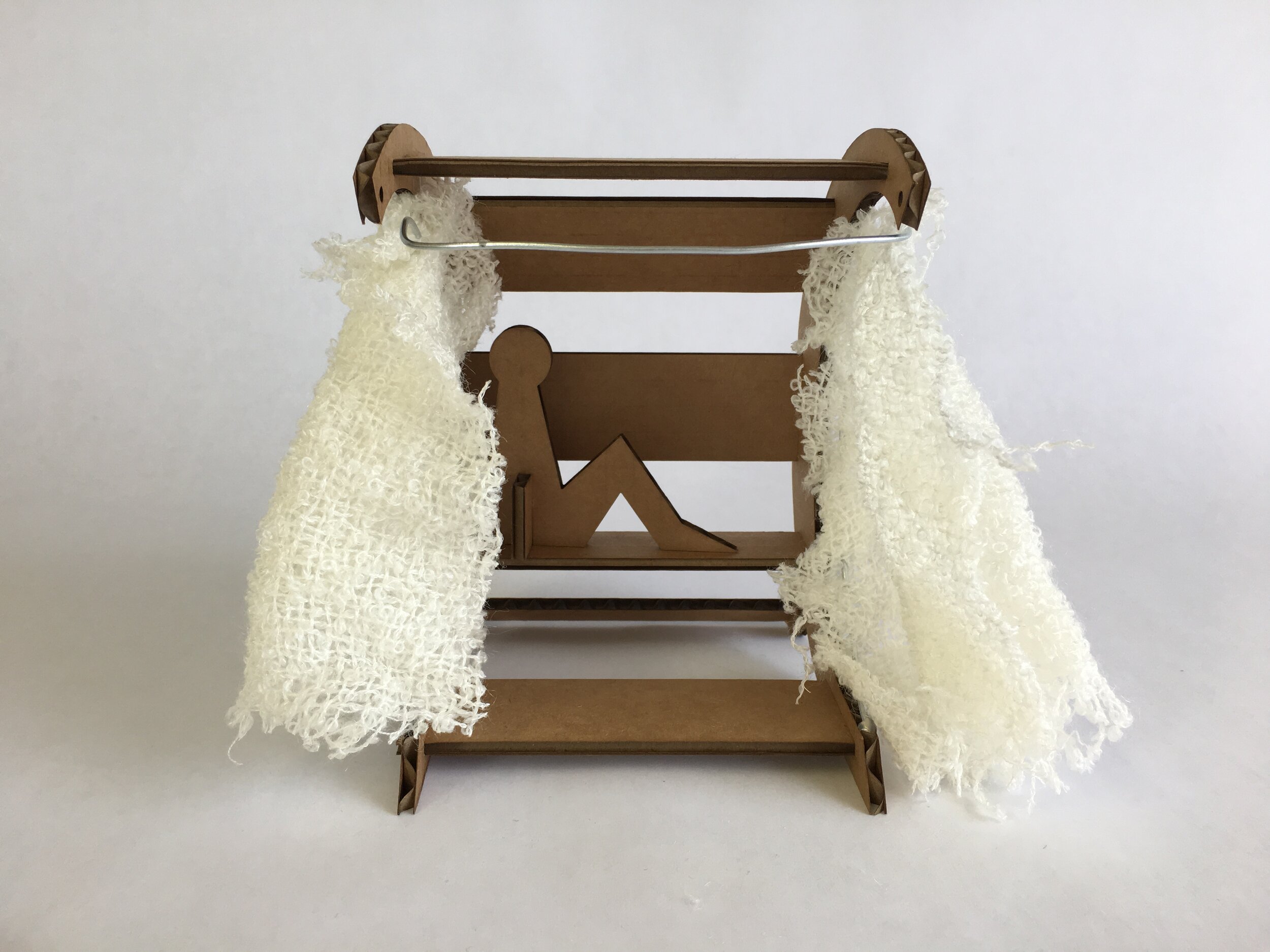

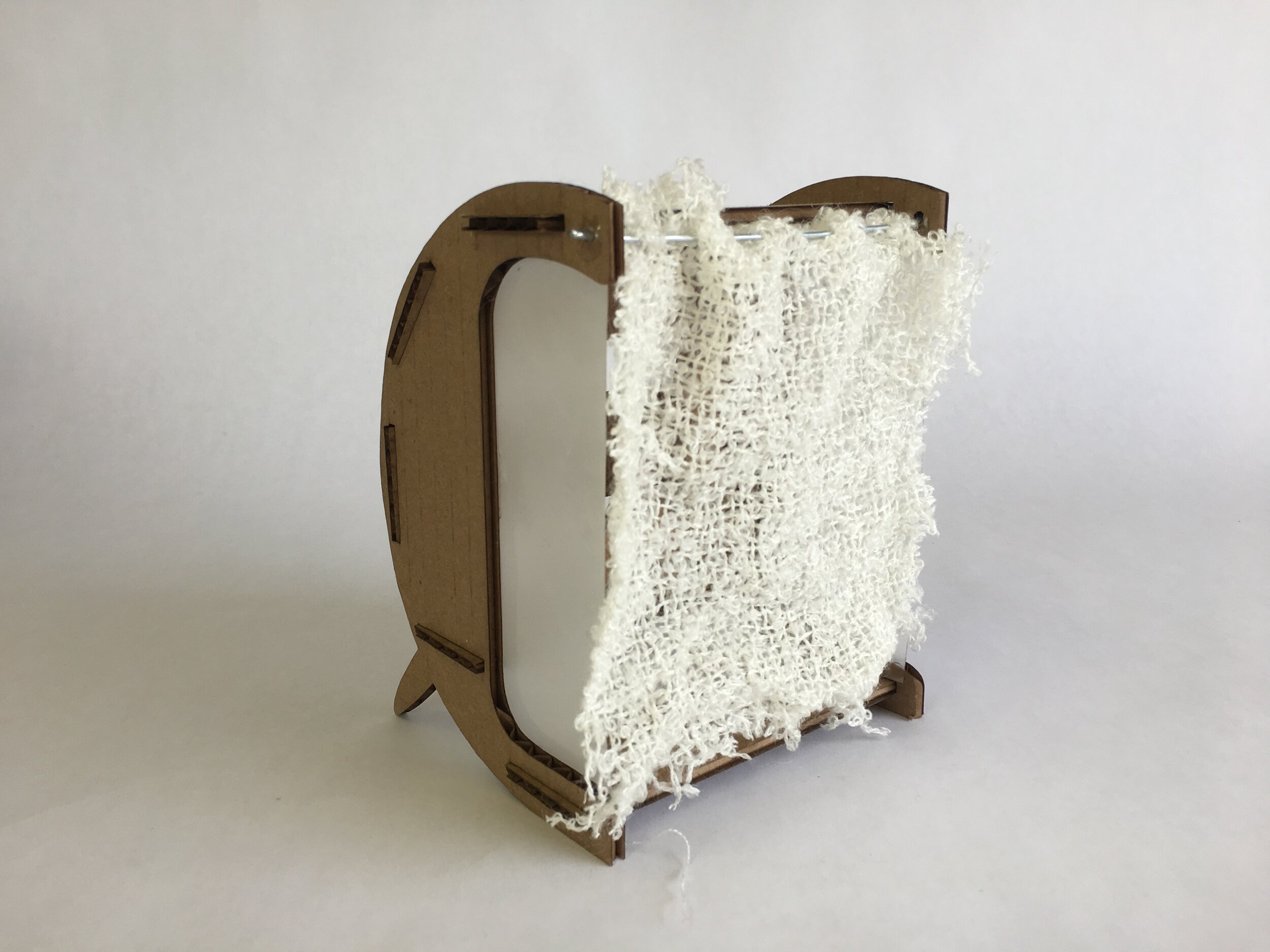

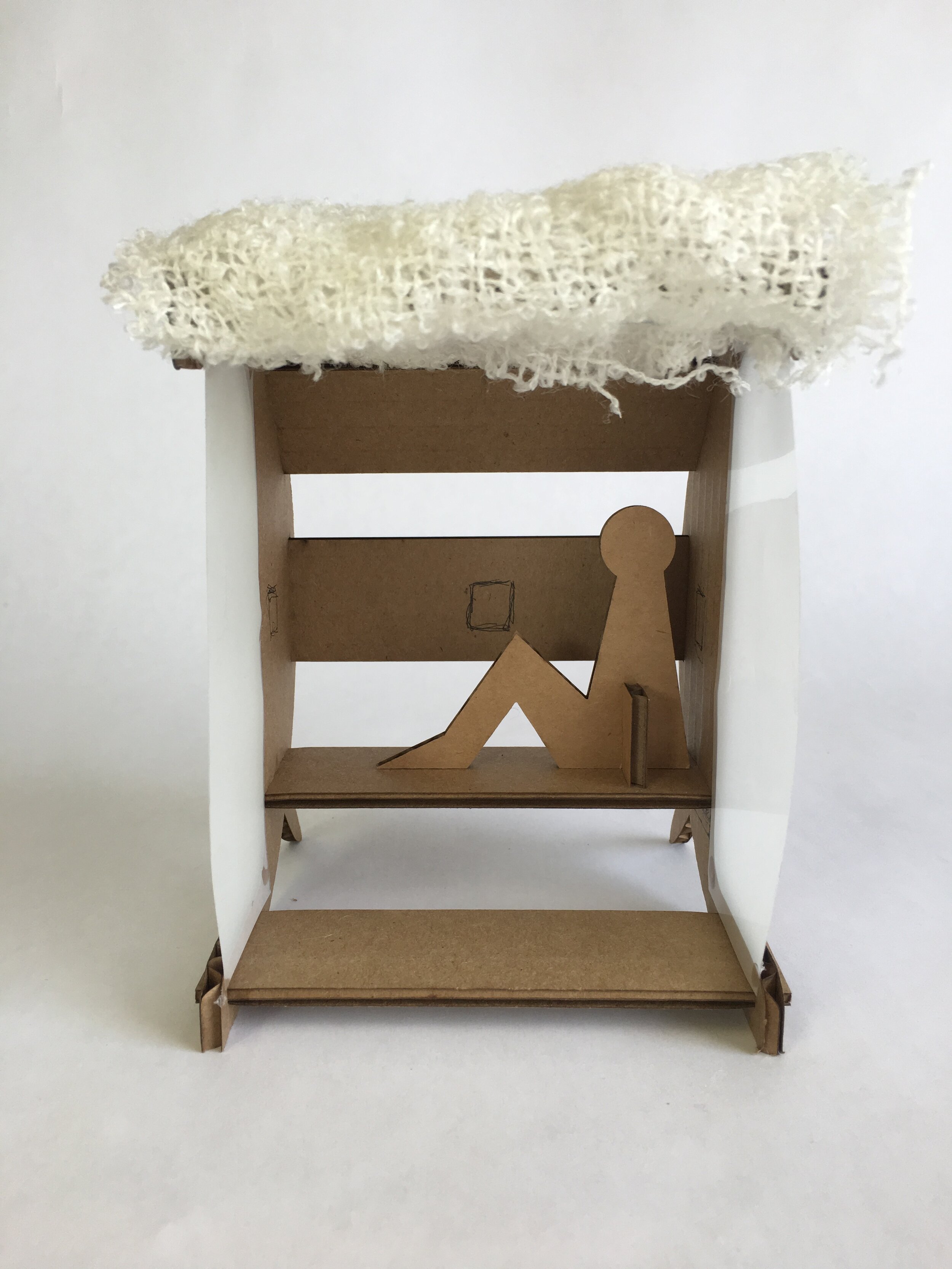
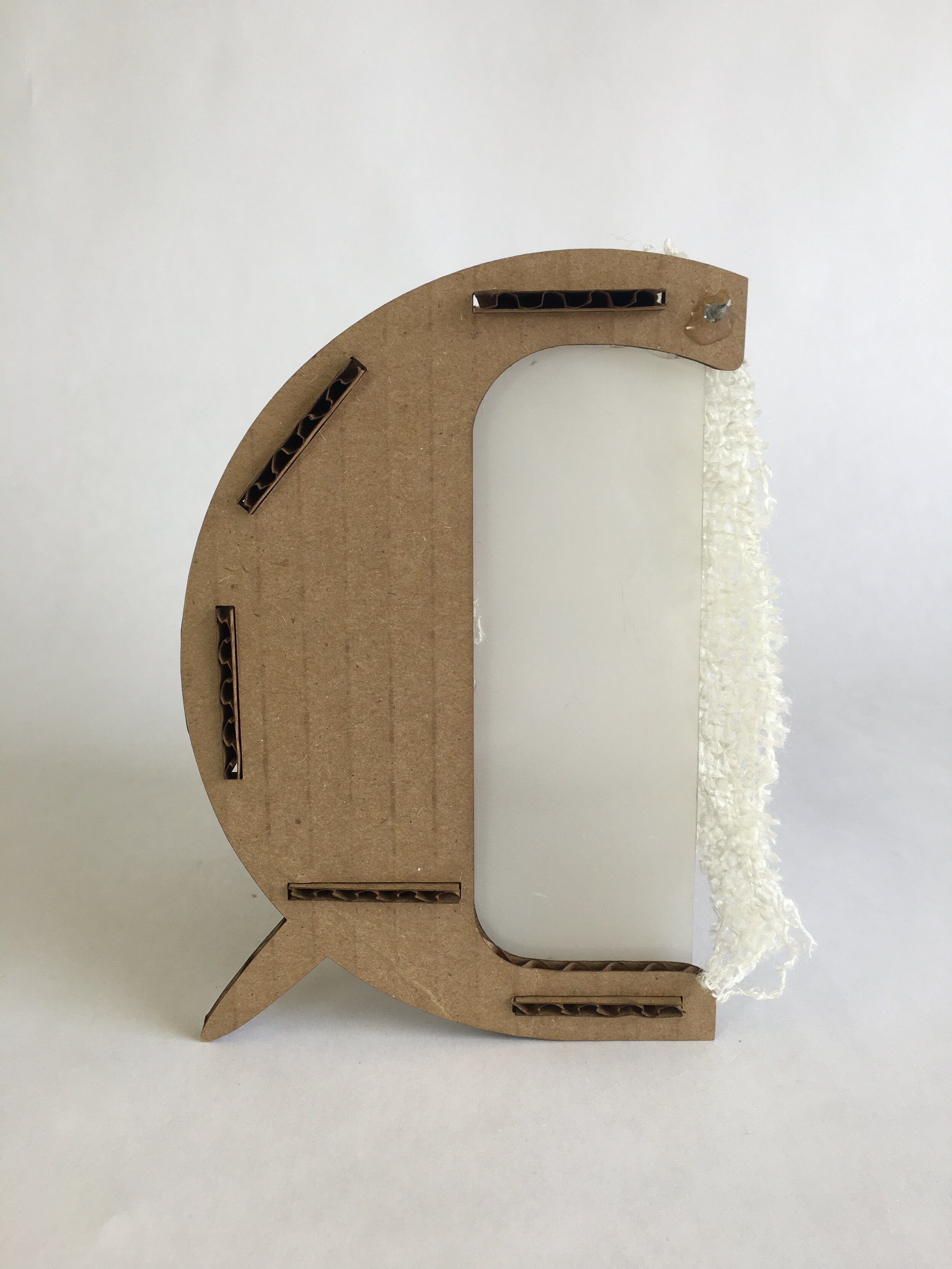

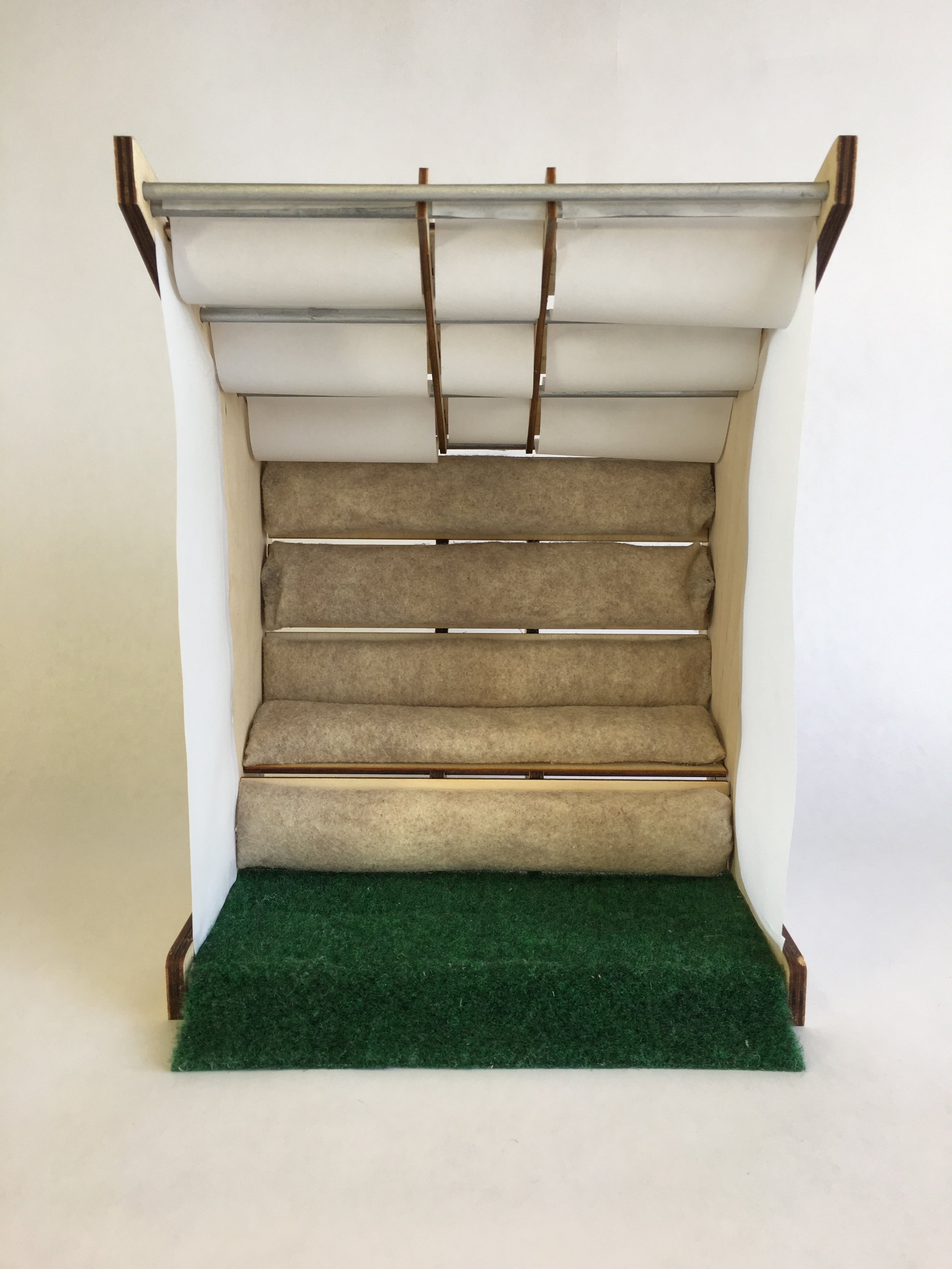
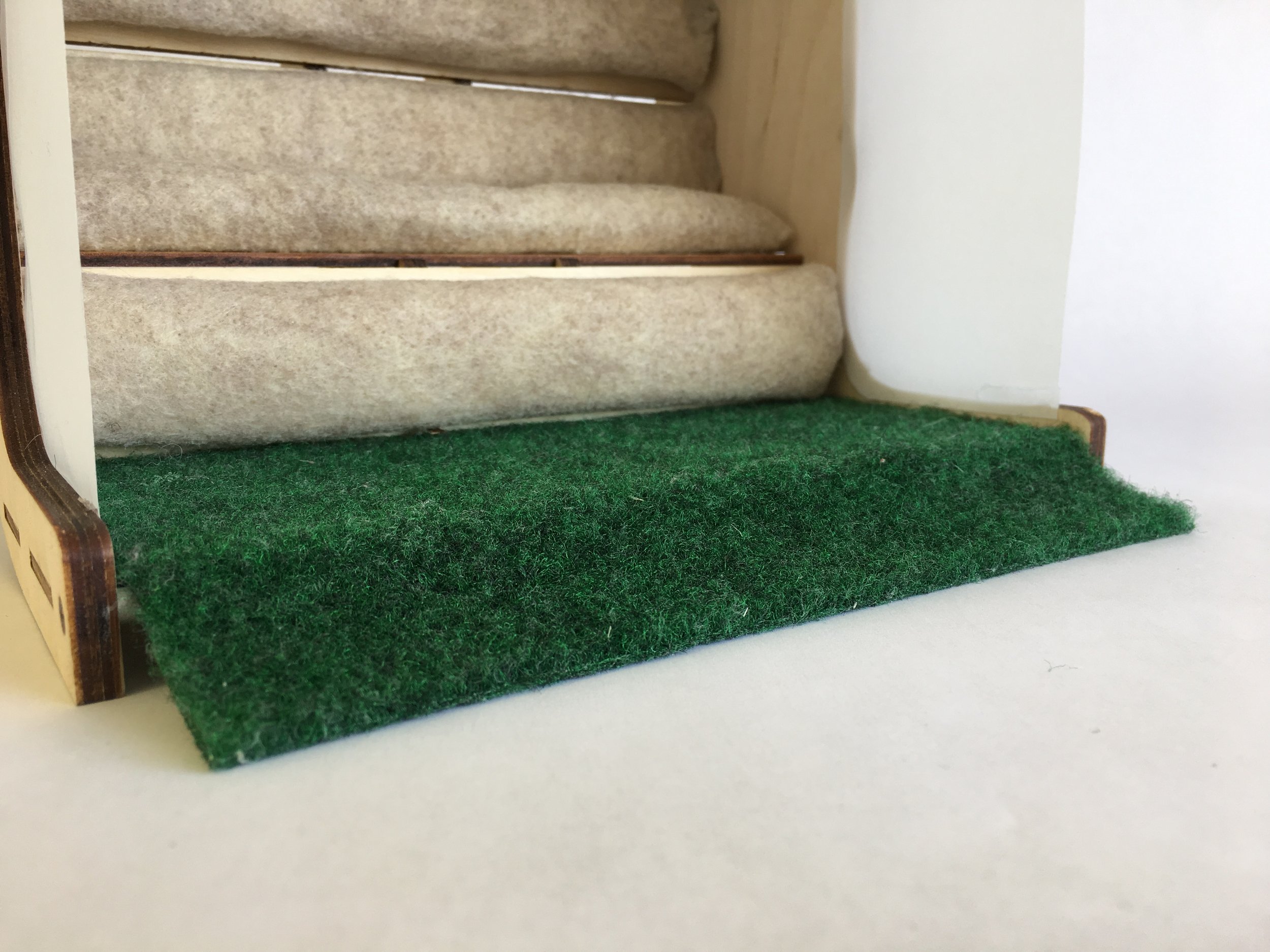
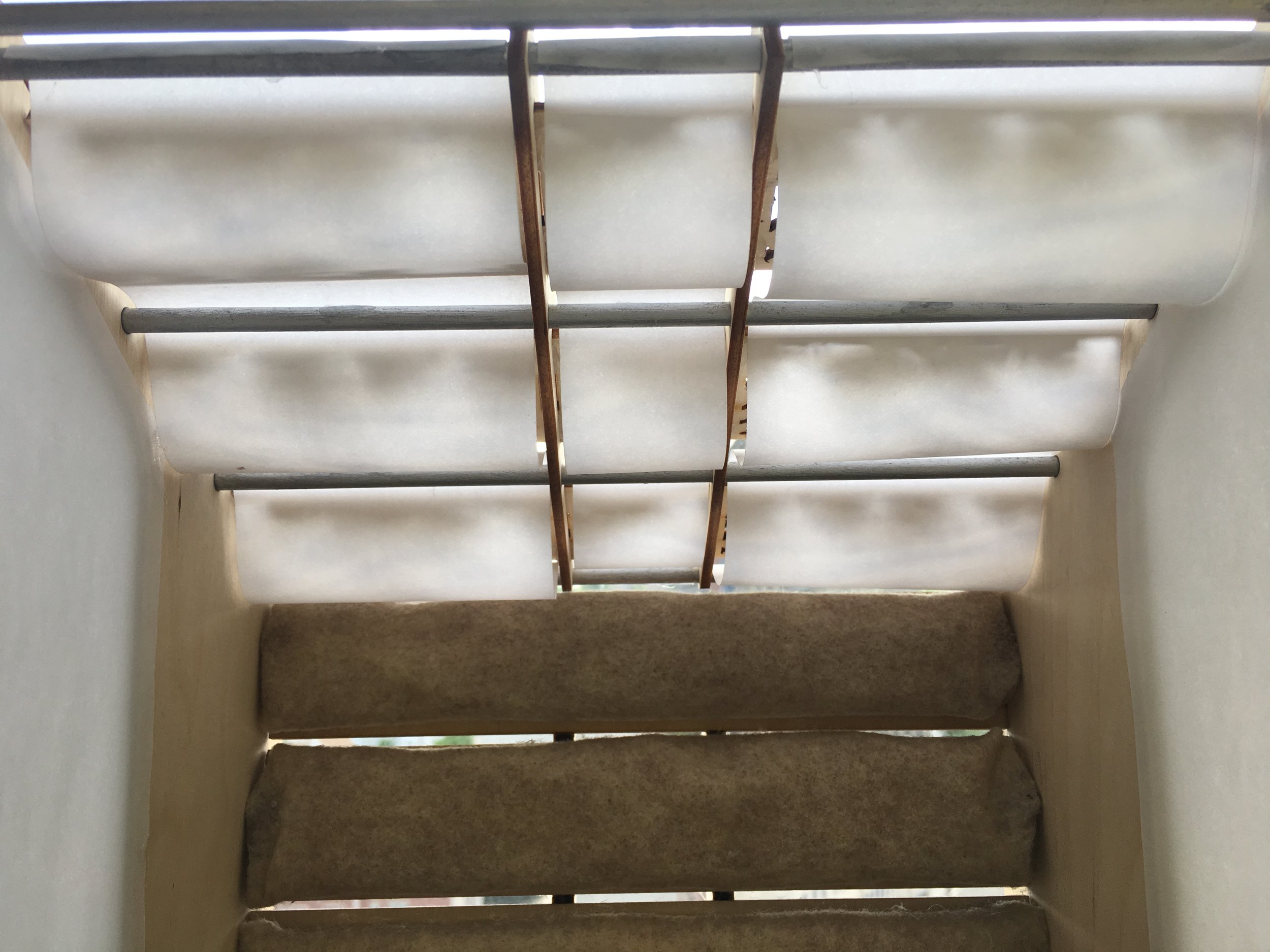
Proposal
A large consider of the booth was maintenance and mobility. The booth was designed on top of a moving platform, which everything was built on top of. If the booth needed to be removed due to some school event or relocated to new space, then theoretically one person could break it down and move it. Though two people would be ideal.
LEDs and speakers would be embedded behind the seating and covered in the back by a large fabric tarp once setup. This would hide all the internal electronics while also allowing technicians easy access if repairs or disassembly was needed.













